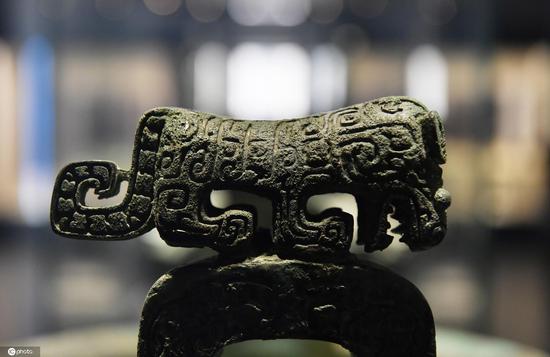
A passenger (third from right) of the first train for the Hangzhou-Shaoxing-Taizhou railway line takes photos with train crew members in Taizhou, Zhejiang province, in January. (Photo by Pan Kanjun/for China Daily)
Targeting improved policies, fewer restrictions and promotion of fairness, the nation is set to provide higher-quality services to improve people's livelihoods.
Data from the national PPP information platform showed a total of 403 projects were added into the database throughout 2021, among which 149 were related to urban infrastructure.
"Global experience has proved that railway lines funded with diversified capital sources have great outlooks," said Sun Zhang, a professor specializing in railway and urban rail transit research at Tongji University in Shanghai.
"Building railway lines funded by multiple parties will become much more efficient and possible than those invested by one company alone," Sun added.
"Construction and operation of the Hangzhou-Shaoxing-Taizhou railway line are included into the whole network of the national railway. As the capital provider, private enterprises are treated equally with State-owned high-speed railway investors," said Fang Jianhong, CEO of Fosun Infrastructure Group, who is also the president of Hang-Shao-Tai Railway Co Ltd.
"The only difference is the reform and innovation in investment and financing," Fang said.
Industrial experts suggest PPP sets a good example for coordinating financial resources to achieve high-quality development of infrastructure and public services, and this will be a win-win outcome for both State-owned assets and private capital.
"The market-oriented stake structure allows the government, the railway operator and social capital to fully play their respective roles and strength, and share responsibilities so as to truly realize win-win cooperation," said Li Jun, deputy director of the Zhejiang Provincial Development and Reform Commission.
Due to its priority placed on market demand, private capital noticed the need for a rail line in some parts of Zhejiang province-an area endowed with relatively fewer railway resources, Sun said.
Regardless of Zhejiang's relatively better-developed railway network compared with other Chinese regions, there remain some areas with insufficient transportation facilities in the Yangtze River Delta.
The new high-speed rail line is expected to become a great boost to the existing high-speed rail network in the delta region as well as nearby city clusters, thus further enhancing Zhejiang's economy, Sun added.
The Hangzhou-Shaoxing-Taizhou railway line links nine stations in the province at speeds of 350 kilometers per hour.
Extending 266.9 km between the provincial capital of Hangzhou and Taizhou's Wenling, the high-speed railway cuts nearly half of the one-way travel time to about 60 minutes.
The successful launch of the high-speed railway ended the history of Shaoxing's Shengzhou and Xinchang, as well as Taizhou's Tiantai of having no railway connections, said Fosun's Fang.
"The line strengthens communications and transport across the Yangtze River Delta region," Fang said.
Considering the project's prime location, the profitability of surrounding high-speed railways, the densely populated region and its highly developed business, Fang believes the line will see steady growth in passenger flows as well as ticket revenue.
Transit Oriented Development-an urban development model that maximizes the amount of residential, business and leisure space within walking distance of public transport-is also expected to enjoy huge growth opportunities, particularly as people and enterprises will be attracted to locations near stations of high-speed railway lines, Sun said.
The greatest challenge posed to the project has been the COVID-19 pandemic, which not only impacted the project schedule, but also brought huge pressure from fighting against the virus, Fang added.
With close coordination between Fosun Group and the project company, as well as dedicated support of local governments, the railway project was launched in due time with high quality, Fang said.
The local railway department arranges 35 pairs of electric multiple unit trains during the initial operational period. And minimum travel time between Hangzhou and Taizhou at maximum speeds is 63 minutes.
China's total railway network stood at 150,000 km as of the end of December 2021, including 40,000 km of high-speed railways, according to Economic Daily. Experts said the network is going to expand further during the 14th Five-Year Plan period.
The Beijing-Shanghai high-speed railway, a role model for securities assets' strength in supporting the real economy's high-quality development, has set a good example for other lines.
The railway has been profitable since 2014. The company's net profit surged at an annual average of 39.4 percent between 2014 and 2019. The railway remained profitable in 2020 despite the impact of COVID-19 and the listed company reported its net profit surged 417.28 percent year-on-year to 2.74 billion yuan during the first half of 2021, according to Beijing-Shanghai High Speed Railway Co Ltd.


















































 京公网安备 11010202009201号
京公网安备 11010202009201号